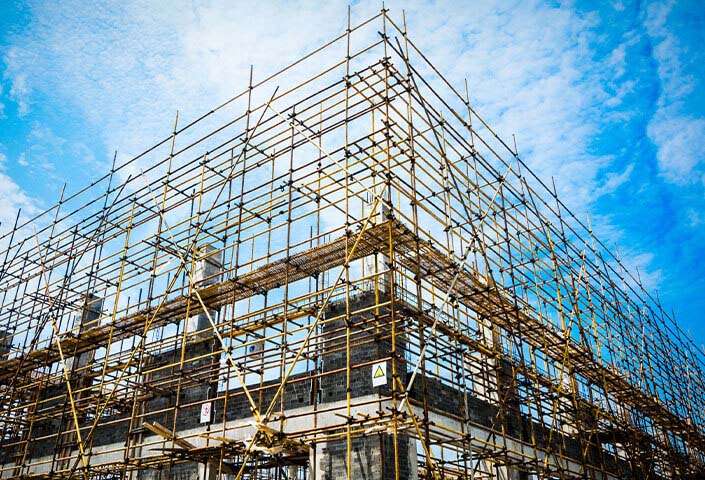Engineering outsourcing to the Philippines is becoming increasingly popular for construction industry businesses who want to provide a high quality product and deliver on time, while maximizing profit in a tough market. Here’s what you need to know before you get started with engineering outsourcing…
The construction industry is no stranger to change. But in a risk-averse global market that demands everyone do more for less, it’s facing a new set of challenges.
For one, building a strong engineering and construction team is becoming harder than ever, with the industry suffering a skills shortage. A 2019 report1 from international consultancy firm, Turner & Townsend, states that two-thirds of the 64 markets surveyed are experiencing skills shortages. Taking the spotlight to engineering, markets including the UK (63%), US (59%), China (63%), and South Africa (67%) all stated demand for skilled engineers (across industries) was higher than the supply, according to the 2017 Queen Elizabeth Prize for Engineering’s report Create the Future.
This shortage of talent can result in an inability for companies to meet the market’s needs. Additionally, it means greater competition for talent and declining ability to service project requirements. That’s where engineering outsourcing makes good business sense. By building a strong offshore team, your business can gain a competitive footing and forge ahead.
Book a Free Consultation
Want an engineer – or an engineering and construction team – in the Philippines?
So what are the benefits of hiring an engineering and construction team in the Philippines?
First, you gain access to a new pool of already vetted, highly educated talent. MicroSourcing has 6,100 engineering and construction professionals in its database. And it’s always growing.
Second, by offshoring an engineering team to the Philippines, you can save up to 70% on labor and occupancy costs. These cost savings, alongside access to new talent, give small-to-medium businesses the opportunity to compete with larger firms.
And finally, by offshoring some of your engineering team, as opposed to just one or two employees, there’s the boost of on-the-job learning provided by working as part of a multidisciplinary team.
Typical roles in an engineering team
MicroSourcing has a long track record of providing outsourced engineering teams to clients all around the world – we’re experts in engineering outsourcing. For example, we’ve helped one of Australia’s largest construction and engineering firms grow from 20 to 90 headcount. These are the common roles we’ve hired in the field of engineering and construction:
- Estimator
- Quantity Surveyor
- Architect
- CAD Operator
- Draftsman
- 3D Modeller
- Civil Engineer
- Electrical Engineer
- Mechanical Engineer
- Quality Assurance Lead/ Manager
- Engineering Technician
- Management Roles (Project Manager, Lead Engineer, Lead Architect, Engineering Manager)
- Support Roles (Administrative Assistant, HR Specialist, Document Controller, Data Encoder).
How does it work? A typical engineering team structure
Creating a successful engineering project requires having the right team in place, with an active line of communication between the different disciplines in the project. The importance of communication cannot be overstated; it ensures your offshore team becomes part of your company culture, and that they master your country-specific project regulations and standards. Much like your local team who might be working on an international project, engineering outsourcing requires the same level of regular, detailed communication.
In an outsourcing set-up, a typical start-up engineering team is usually composed of:
- 1 Quantity surveyor
- 1 Architect
- 1 CAD operator
- 1 3D modeller
- 1 Project manager
- 2–3 engineers of different specializations (for example, civil, electrical, mechanical)
- 1 Administrative assistant.
Key roles in your offshore team
Your construction team needs to rest on strong foundations. Each position is highly specialized and, as the saying goes, a chain is only as strong as its weakest link.
Project manager
Depending on the project’s needs, your first port of call might be a project manager to oversee and facilitate the project process. Project management requires excellent communication skills, a high level of strategic thinking, a detailed knowledge of the industry, and an intimate understanding of the role of each team member.
Project managers also need to make executive decisions using their knowledge and experience in the industry, so an offshore project manager will probably require at least a few projects under their belt. The larger and more complex the projects are, the more experienced your project manager will need to be. They’re usually the facilitator that keeps the project moving, and can be part of the project from the beginning stages of planning, costing and design through to construction, depending on the scope of the project.
It doesn’t always suit a project to have an offshore project manager to replace an onshore one, as they’re often required to conduct site inspections. But offshore and onshore project managers can work together to manage both teams and ensure that quality, cohesion and communication flows between the onshore and offshore teams, especially for larger projects.
Architects
If your project is on a smaller scale, you could offshore the lead architect to design the concept that the engineers can then base their schematics off (if the architect has appropriate accreditation for the region they are designing for). This architect could also act as the conduit between the engineers and the project manager, or, in some cases, clients. For larger projects, you could also offshore an architect to work under the lead onshore architect, to help them work on a specific part of the project.
CAD operators, 3D modellers and associated roles
You could save your company time and money to offshore the presentation side of the project. This could entail not only CAD drawings, realistic renderings and 3D models of the concept, but also a walk-through. These walk-throughs are generally used to show the physical and functional characteristics of the concept to a client and are for presentation purposes only, with the aim of getting faster and more effective approvals from the client. Walk-throughs are becoming common practice in the industry and are also becoming increasingly sophisticated via the integration of virtual reality software. Suffice to say that a strong level of technical know-how is required for this component.
Engineers
Next, you’d need engineers of various specializations to design the structure and map out suitable schematic designs. Offshoring engineering teams specifically, as opposed to the whole project team, can be a good starting point, as these roles require less client interaction than a project manager, for example, and can be more systematic.
That’s not to underplay the role of the engineers, as each engineer’s role is crucial to the success of your project, and impacts every team member. This means that, for an engineering team, you’d usually require an engineer from each discipline, as they’re each highly specialized. If you have a team of intermediate to senior engineers offshore, you would also probably have discipline-specific engineering technicians offshore to complete all the nitty-gritty details on the design. Depending on their specializations, engineering technicians may become civil, mechanical or electrical engineers, with further formal studies and licensing.
As the roles are so specialized, engineers can’t move into other roles as fluidly as some positions, but they can rise to more managerial positions and take on more responsibility in their particular niche within the team.
Quantity surveyor
Next in line is the quantity surveyor, who’ll provide cost planning, bills of quantities, variation assessments, and progress claim reviews. Your offshore quantity surveyor may require an assistant – or more than one, in the case of large projects. Again, the project manager will be the main liaison with the quantity surveyor, though the work of each discipline impacts them. For example, if there’s a variation in the design from one of the engineers, the quantity surveyor will need to be across this to assess it.
With additional training or postgraduate studies, quantity surveyors can move into project management roles, so long as they have a background in construction and experience.
Administrative assistant
To top off your engineering services and outsourced team, you’d need an administrative assistant to manage documentation and assist the team as needed. They’d ideally have experience within the construction industry so they can help with documentation control, contracts administration and submissions.
Potential offshore team structure
The below organizational chart outlines a potential offshore construction team structure. This structure is just an example of what an outsourced engineering team could look like, as each project and client has a different chain of command and different needs. For example, in this instance the offshore engineers are under the jurisdiction of an architect or lead engineer, rather than an offshore project manager.
What are some of the challenges of offshoring an engineering team?
Naturally, operating an offshore engineering and construction team is not without its challenges. The main one is that there is a physical output that needs to be monitored during its construction. Some projects will require site inspections from its engineers, so you’ll need onshore lead engineers to conduct these.
There are also different standards required and regulations in place, as well as levels of accreditation, depending on the region the construction is taking place in. This will need to be considered when building your offshore team.
Other challenges, such as communication, are slowly but surely being resolved via technology. BIM (building information modeling), for example, is a game-changer for the industry, helping make the process more accessible for project teams (which is ideal for remote work) and making cross-discipline collaboration easier. Also, online meetings make liaising with the client or onshore leads much smoother. The only hiccup that might come into play is finding the sweet spot when it comes to time zones. Having said that, this could also be used to your advantage to get works completed overnight. As a gauge, Manila is 15 hours ahead of Los Angeles, 7 hours ahead of London, 6 hours ahead of Amsterdam and 2 hours behind Sydney. What’s more, a good offshoring provider with genuine engineering outsourcing expertise will provide a team that can work during your business hours, so you’re not constrained by time zones at all.
Reference:
1 Turner & Townsend. Labour skills shortages, International construction market survey 2019
Frequently Asked Questions
It is completely dependent on what roles you decide to offshore. You could have an engineering team up and running in as little as six to eight weeks.
The best way to ensure an efficient recruitment process for our talent acquisition (TA) team in the Philippines is to ensure that, during consultations, you detail the role requirements, skills and ideal candidate as best you can. This will ensure that our TA team in the Philippines has the necessary information to source the perfect candidate to get your offshore team up and running as soon as possible.
Keep in mind, depending on the size of your required engineering team, our talent acquisition team may require additional time for the extra recruitment, training and onboarding.
MicroSourcing’s talent acquisition team works just as an in-house recruitment team would. They screen, interview and test candidates to ensure they meet the needs and requirements as illustrated in your position descriptions. With over 10 years of experience pioneering a new way of offshoring, MicroSourcing’s expertise is backed by being one of the largest and most experienced offshoring providers in the Philippines - so quality is not a concern.
With a dedicated management team on the ground, working one-on-one with your staff in the Philippines, MicroSourcing has 192+ talented staff in operations who keep the communication between your business and your offshore team streamlined. We also have operational departments that help your employees function efficiently and productively.
Interested in recruiting team(s) in the Philippines?
Since our inception in 2006, MicroSourcing has become one of the biggest providers of offshoring solutions in the Philippines. We can help you build a dedicated team in the Philippines, regardless of the roles and level of specialization you require. MicroSourcing is backed by our parent company, Probe CX, one of Australia’s fastest-growing offshoring solution and customer engagement firms. So, it’s safe to say we’re experts in outsourcing to the Philippines.
Call +1 888-731-0023 today or send us an email to discuss your company’s offshoring needs.



























